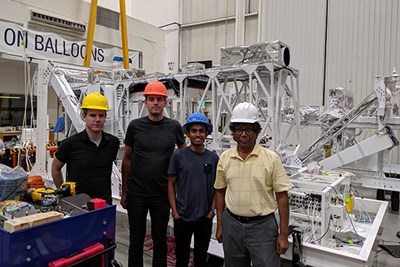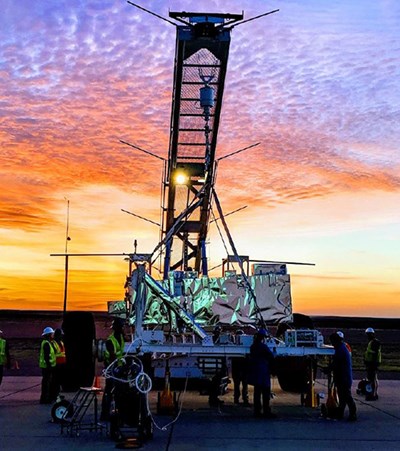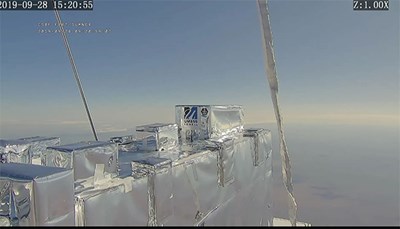NASA selects Mendillo for fellowship program, awards him $7M grant
Assistant research professor developing technology that may lead to discovery of new planets

Asst. Research Prof. Christopher Mendillo has been selected for a NASA fellowship program that will help push the Lowell Center for Space Science and Technology (LoCSST) to new heights.
The fellowship, named after the distinguished American astronomer Nancy Grace Roman, gives early career researchers the opportunity to develop innovative technologies while growing the skills needed to lead astrophysics flight instrumentation development projects.
“It’s a great honor,” says Mendillo, who began working at UMass Lowell in 2013 as a postdoctoral fellow before being promoted to research scientist and then assistant research professor. “The fellowship will help grow visibility for our lab and all the awesome work that we’re doing.”
Mendillo will receive $500,000 in funding as part of the fellowship, which he says will greatly benefit LoCSST.
“The funding will help bring our research group to a new level,” he says, adding that it gives LoCSST the opportunity to add facilities or equipment to its lab and possibly hire new personnel.
Search for New Planets
NASA named Mendillo a Nancy Grace Roman Technology Fellow one month after he secured a $7 million, five-year grant from the agency for a project that will advance exoplanetary dust science and key technologies required to one day capture images of Earth-like exoplanets that orbit sun-like stars.

The research team, composed of students, early-career scientists and experienced professionals from UMass Lowell, the NASA Ames Research Center, the Jet Propulsion Laboratory, the University of Arizona and Leiden University, will be making upgrades to a telescope that was previously sent to the edge of Earth’s atmosphere to photograph exoplanet dust and debris. The latest mission, known as PICTURE-D (Planetary Imaging Coronagraph Testbed Using a Recoverable Experiment for Debris Disks), is in its fourth iteration.
“PICTURE-D is a follow-up to the existing mission (PICTURE-C), in which our team will add new technologies to be able to do better science,” says Mendillo, the principal investigator of PICTURE-D.
The biggest challenge the researchers face when trying to take images of objects in space is the amount of light that nearby stars emit. This light washes out dust, debris and any exoplanets that might be present.
“If you try to look for a planet next to a star, typically the planet is a billion times dimmer than the star, and they’re very close to each other in the sky,” Mendillo says.
For PICTURE-C, the scientists used an instrument called a chronograph to block out light from stars so dimmer objects in space could be seen through the telescope. The chronograph in PICTURE-C could only block out light from one star at a time, which makes it difficult to view objects surrounded by two stars.
The researchers will be using new technology to build a chronograph for PICTURE-D while testing out new techniques to block light from multiple stars. This chronograph will also allow them to measure more properties of dust and debris.

Additionally, the team will be making improvements to its optical control system, which keeps the telescope stable, and its detectors.
Once PICTURE-D is complete, it will be sent to the edge of Earth’s atmosphere using a helium balloon that is roughly the size of a football field. The telescope will stay suspended about 125,000 feet in the air for several hours as it captures images of dust and debris in space. Ground controllers will then release the telescope from the balloon so it can be parachuted back to Earth.
PICTURE-C successfully completed its first launch in September 2019 from the NASA Columbia Scientific Balloon Facility in Fort Sumner, New Mexico, and has another launch scheduled for fall 2022.
Mendillo says these high-altitude balloon missions are important because they lead to the development of technology that can then be used in larger space missions.
“There might be a planet like Earth orbiting a star that’s like the sun and if so, we’d like to find it someday,” says Mendillo. “But to be able to do that, we need new technologies, and before NASA will fund a huge mission to do it in space, they would love to see it demonstrated on a balloon.”